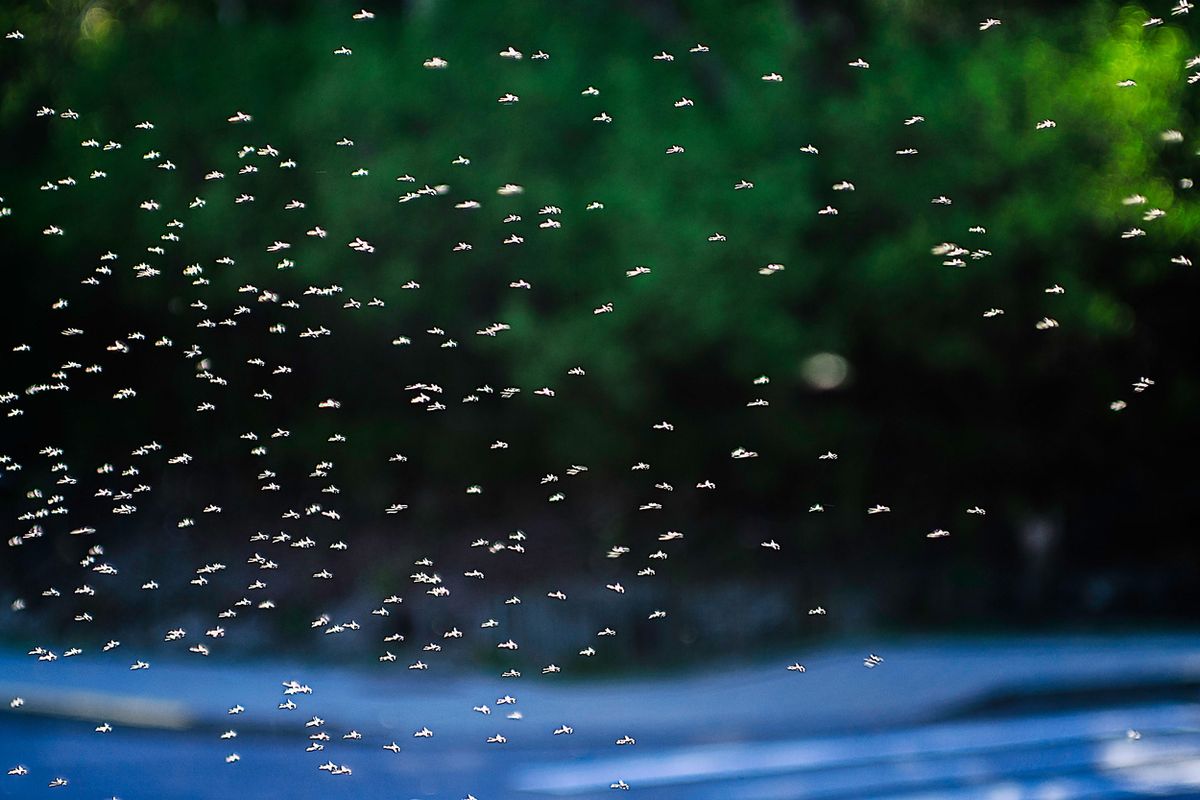
KajaNi via iStock
How autonomous vehicles may move like insects to prevent accidents
New research will look at how insects stop themselves from crashing into each other and apply that to self-driving car technology

New research will look at how insects stop themselves from crashing into each other and apply that to self-driving car technology
Researchers are borrowing from insects to build a new way for self-driving cars to avoid collisions.
The University of Lincoln in the the UK is tapping into sensor technology to duplicate some of the ways that insects avoid mid-air collisions when moving in swarms. Researchers want to develop a microchip that can be embedded in self-driving cars to keep the vehicles — and clearly those inside them — safe while on the road.
The ULTRACEPT project, which stands for ultra-layered perception with brain-inspired information processing for vehicle collision avoidance, (a mouthful we know) will look at how insects react during the day and night. The goal is to produce a sensor system that can "quickly adapt to unexpected hazards and different conditions – for example sudden weather changes or driving in and out of tunnels," according to the University of Lincoln.
Autonomous technology — where cars control some, or all, aspects of driving — require A.I. systems that can make decisions to avoid collisions on the road. Some lean on Lidar technology, which is picks up on light and movement, and is being tested in many self-driving cars including those from Waymo.
The University of Lincoln believes some options, which include not only Lidar but also GPS, are not completely effective. Instead, they're also looking at options which will include apply thermal technology to avoidance systems.
ULTRACEPT just earned a €1.8 million grant ($2.2 million) from the European Union's Horizon 2020 research program. Universities working on the project are coming from countries across the globe including Japan, Germany, Argentina, China and the UK. Research starts December 1, 2018 running through November, 2022.
"Biology provides a rich source of inspiration for artificial visual systems for collision detection and avoidance," says Shigang Yue, professor of computer science at the University of Lincoln, who will be running the ULTRACEPT project. "For example, locusts, with a compact visual brain, can fly for hundreds of miles in dense swarms free of collision; praying mantis can monitor tiny moving prey with the help of specialized visual neurons; and nocturnal insects successfully forage in the forest at night without collision."
GearBrain Compatibility Find Engine
A pioneering recommendation platform where you can research,
discover, buy, and learn how to connect and optimize smart devices.
Join our community! Ask and answer questions about smart devices and save yours in My Gear.
